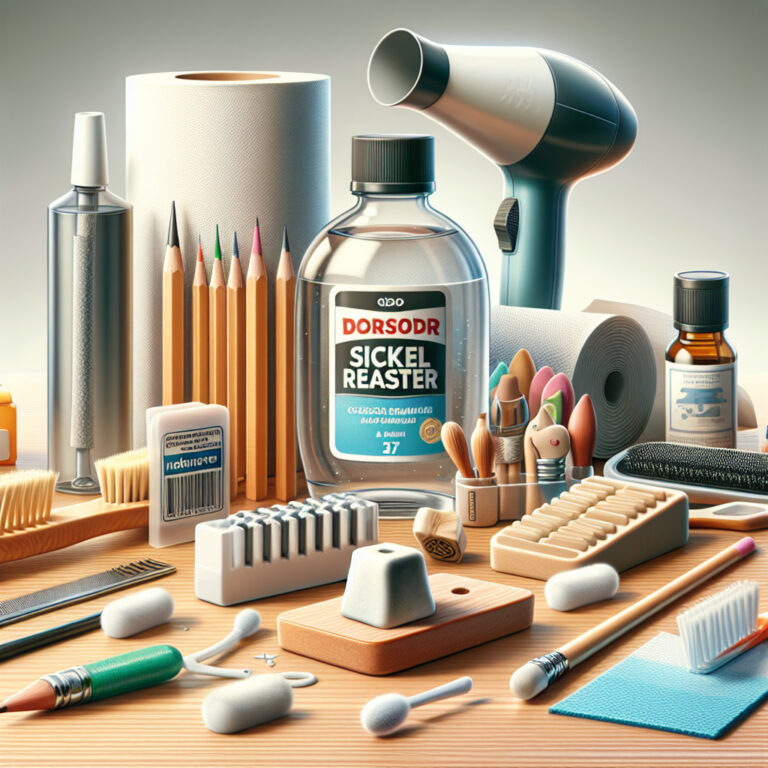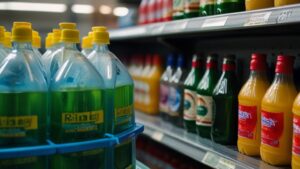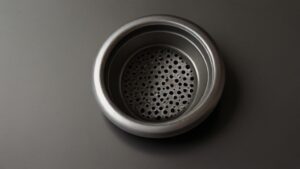If You Can’t Remove the Residue from a Sticker, Use a Pencil Rubber/Eraser
Stickers are commonly used for various purposes, from decorating personal belongings to labeling items. However, removing the sticker itself is often just the beginning of the struggle, as it can leave behind a sticky residue that is difficult to get rid of. Thankfully, there is a handy solution that is both simple and effective – a pencil rubber/eraser. In this article, we will explore how using a pencil rubber/eraser can effectively remove sticker residue, providing you with a pristine finish.
The Annoying Sticky Residue Dilemma
Sticker residue has plagued many individuals, causing frustration and often leaving behind unsightly marks. Whether it’s on glass, plastic, metal, or any other surface, getting rid of it can feel like an impossible task. Paper towel and water usually don’t do the trick, and chemical-based cleaners might damage certain materials. However, fear not, as an everyday tool lurking in your pencil case can come to the rescue – a pencil rubber/eraser.
Pencil Erasers and Their Magical Properties
Pencil erasers are designed to remove marks from paper by rubbing against the surface. Their ability to effectively erase pencil marks stems from their composition, which typically includes a mixture of rubber and other additives. These additives make pencil erasers abrasive enough to remove pigment from paper without damaging it. The good news is that this same abrasiveness can be utilized to remove sticky residue left by stickers.
The Method Behind the Magic
Using a pencil rubber/eraser to remove sticker residue is quite simple. Just follow these steps:
Step 1: Select a Suitable Pencil Rubber/Eraserr
Different types of pencil rubbers/erasers are available, ranging from soft to hard, and from white to pink or blue. For removing sticker residue, it is best to choose a soft rubber, as it is less likely to scratch delicate surfaces. Opting for a white or colorless eraser also reduces the chances of leaving unsightly marks or stains.
Step 2: Prepare the Surface
Before starting, ensure the surface is clean and free from any loose dirt or debris. Wipe it down with a dry cloth to create a clean starting point for the removal process.
Step 3: Apply Gentle Pressure
Hold the pencil rubber/eraser firmly and apply gentle pressure to the sticker residue. Rub the eraser in a circular motion or back-and-forth motion, depending on the stubbornness of the residue. The eraser’s abrasiveness will help break down the sticky residue, gradually lifting it from the surface. Avoid using excessive force, as this can lead to surface damage.
Step 4: Clean Up Residue
As you work on the sticker residue, you may notice small pieces of the residue accumulating on the surface. Wipe away these fragments with a clean cloth or tissue. This will prevent the residue from spreading or reattaching to the surface as you continue to work.
Step 5: Repeat if Necessary
Depending on the sticker’s adhesive strength, you may need to repeat steps 3 and 4 multiple times. Be patient and continue until you have completely removed the residue.
Step 6: Final Touches
Once all the sticker residue is gone, wipe down the surface with a damp cloth to remove any remaining eraser debris. Then, dry the area thoroughly for a pristine finish.
Removing sticker residue can be a pesky problem, often requiring multiple attempts with different methods and products. However, the simple pencil rubber/eraser offers an effective solution that is gentle enough for most surfaces. By following the straightforward steps outlined in this article, you can bid farewell to sticky residue and enjoy a clean surface once again. So before you reach for complicated cleaning solutions, give a pencil rubber/eraser a try – you’ll be amazed at its magical properties.



